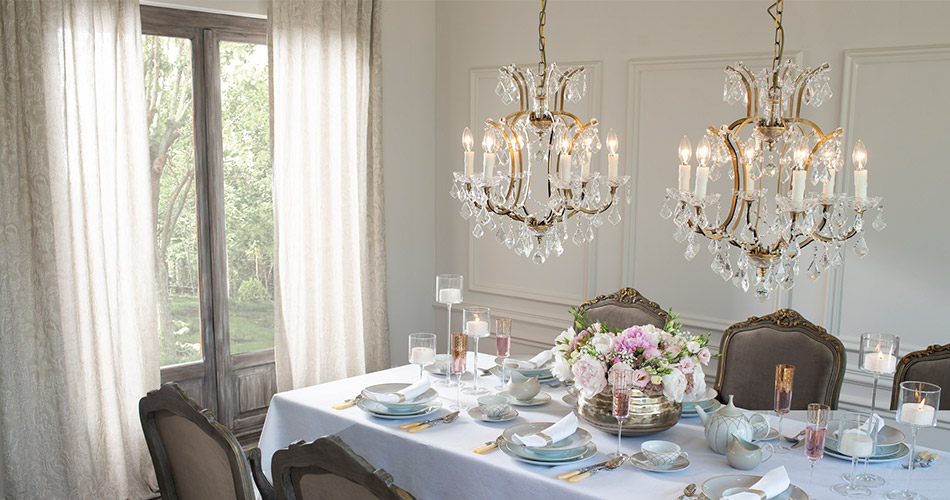
In the glow of the chandelier. Learn its history
At first, it took on simple forms - a suspended circle with places for candles. Then it delighted with unique, rich decorations and structures. Now the choice of this type of lighting is so huge that we can match it to any interior design, room size and our preferences. Learn about the history of the chandelier .

The history of the chandelier is much longer than that of the light bulb and electricity. Its prototype was the Byzantine polycandylion, which appeared in the 5th-6th century. It was a flat, openwork, metal disc with arms for candles. Simple chandeliers in the form of circles were first seen only in churches, then they also began to appear in the homes of the wealthy. The Renaissance was a time when chandeliers began to take on larger and more sophisticated forms. They were to be more decorative, but also more practical - to hold more candles and give more light.
In the 15th century, they began to become more and more common - they could be found not only in the residences of the wealthiest, but also in the houses of merchants and wealthy households - although here they appeared in much cheaper versions, made of wood. Chandeliers were one of the obligatory, prestigious elements in palaces, residences and exclusive institutions. They delighted with their appearance - they beautifully reflected light and shimmered fabulously in the interior.
The flourishing of richly decorated chandeliers was brought by the Baroque. It was then that its sophisticated, multi-level models full of splendor began to appear. They took on increasingly refined forms. They were decorated with mirrors, crystals and brass plates - all to spread even more shine. The masters in their creation were the French and Italians.

With the advent of electricity, this type of lighting became increasingly popular and began to appear in middle-class homes. Today, we can choose from a wide range of models - from simple, minimalist to grand, fanciful and richly decorated.

Crystal chandeliers
The popularity of the crystal chandelier was contributed to by the Austrian Empress Maria Theresa, who ordered a completely new model of this lighting for her palace - an impressive, multi-level structure with glass teardrops and crystal rosettes. It gave much more light and shine than previously known models and started a fashion for this form of chandelier among royal families. To this day, in Istanbul, you can admire a chandelier from that time, which was a gift to Sultan Osman III from Queen Victoria. It weighs 4.5 tons and has space for 750 candles.







